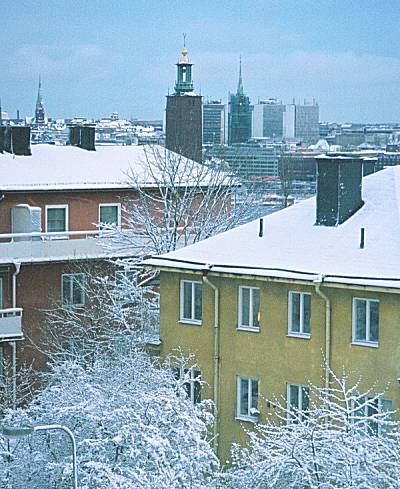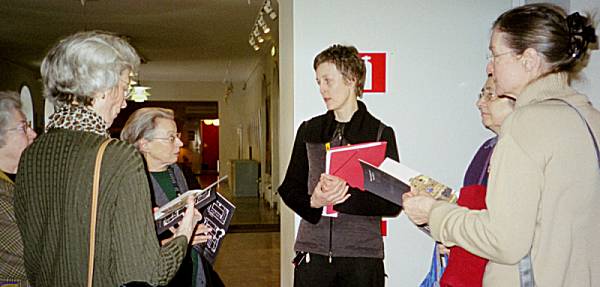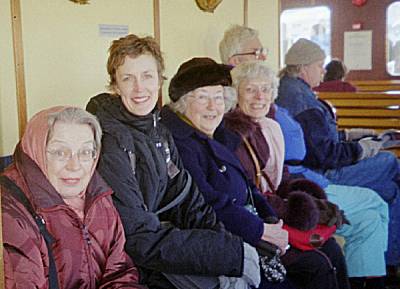
Stockholm on very bright and cold winter days
(photo by Margareta Ridderstedt)
| ANNE WANNER'S Textiles in History / meeting in stockholm |
| Meeting in Stockholm, 3 and 4 March 2005 |
 Stockholm on very bright and cold winter days (photo by Margareta Ridderstedt) |
Thank you
Margareta for your photographs, which were added to this
page in December 2005 |
 Friday morning 3rd March in Historiska Museet (photo by Margareta) |
|
Stockholm with ice, snow and wind
|
|
 it is more comfortable inside the ferry boat !!! (photo by Margareta) |
During the last 100 years vestments were
made in this house, the "Ateljé Licium" |
|
Our swedish collegues prepared a
splendid programm for our meeting. It concluded with a
very good dinner at Margaretas home Round table at
Margareta's house: |
Ursula, Mari-Louise, Anne, Margareta |
| The swedish collegues:
Mari-Louise Franzén, Margareta Ridderstedt and Inger
Estham waited for our small group on Friday morning 3rd
March in Historiska Museet. Dela von Boeselager from
Cologne had joined me, as well as my swiss collegues
Ursula Karbacher from Textilmuseum St. Gallen and
Elisabeth Schillinger, who studied at Abegg Stiftung and
later worked at Ethnographic Museum of the University of
Zürich. At first we visited the exhibition: Textiles
for the soul. Licium was founded in 1904 by Agnes Branting and Mimi
Börjesson. Agnes Branting (by the way an aunt of Agnes
Geijer), was the renewer of ecclesiastical textile art at
the beginning of the 20th century. The workshop was
headed by Agnes Branting until her death in 1930. Sofia
Widén, Edna Martin and Ĺsa Bengtsson then took over as
Artistic Directors. That post has been held since 1997 by
Marie-Louise Sjöblom After Lunch we had a look at the installation by the
internationally known artist Ann Hamilton. She was
invited by the National Swedish Art Council. In her
project "aloud" she shows her interest in
physical actions that create vocalizations. It was already 5 o'clock when we came together in the library to continue our studies at the vocabulary project. To conclude this interesting day, we spent a very nice evening in the very special Restaurant Wärdshuset Gothem, built in 1874, close to Skansen Openair Museum. Saturday morning we continued to work in the library
and Mari-Louise demonstrated the museum's inventory
computer program of the historic objects from Historiska
Museet. Our host then offered us the nice possibility to take
a ferry to the old town. We visited the Storkyrkan
(cathedral in the old town) and its storeroom for
vestments. The swedish specialists showed us every drawer
and explained its contents. |
| home content | Last revised December 22, 2005 |